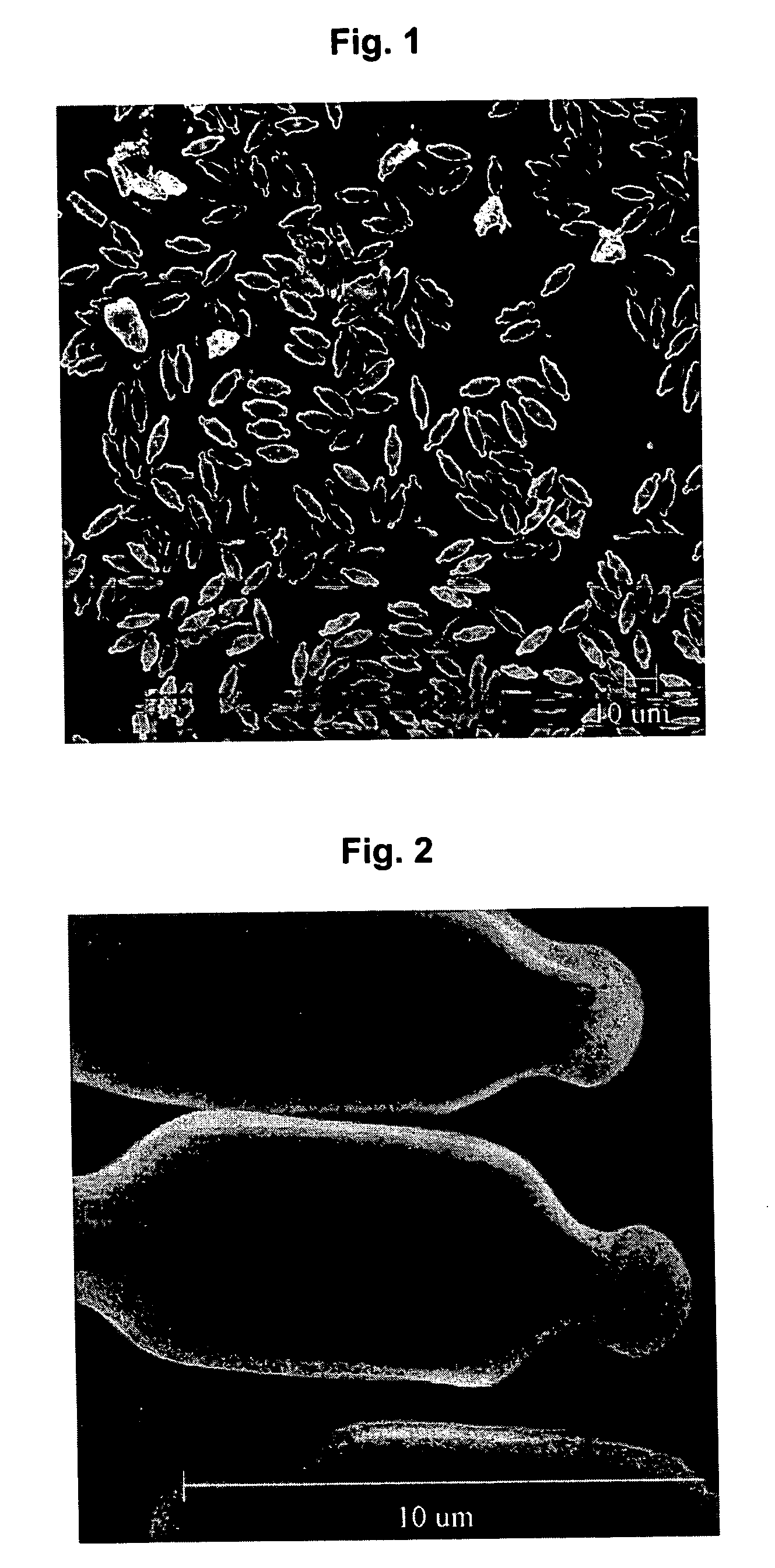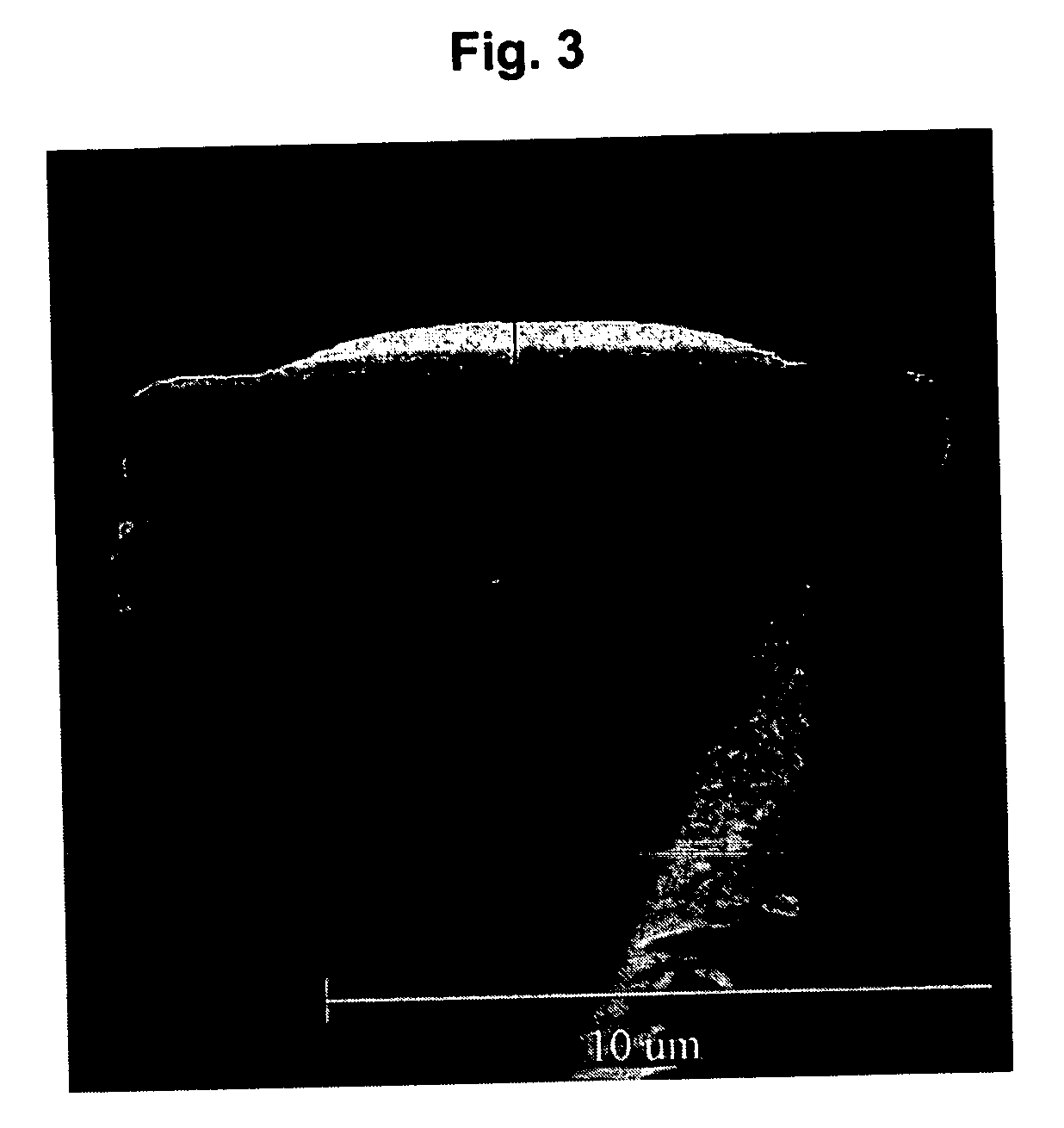Structured self-cleaning surfaces and method of forming same
a self-cleaning surface and structure technology, applied in the field of structured self-cleaning surfaces, can solve the problems of sacrificing self-cleaning capability, sacrificing the durability of polymeric surfaces, and not revealing a surface optimized for micro-roughness, so as to improve durability, improve durability, and improve durability.
- Summary
- Abstract
- Description
- Claims
- Application Information
AI Technical Summary
Benefits of technology
Problems solved by technology
Method used
Image
Examples
example 1
[0041] One part by volume of concentrated hydrochloric acid was dissolved in 3600 parts of distilled water. This solution was labeled Acid 1. One part by volume of concentrated hydrochloric acid was dissolved in 200 parts of distilled water. This solution was labeled Acid 2. 106.36 g of denatured ethanol was placed in a round bottom flask. 0.7 g of tetraethylorthosilicate (TEOS) was weighed and added drop wise to the stirring ethanol. The beaker was rinsed with 10 g of ethanol. 1.4 g of Acid 1 was weighed. The acid was added drop wise to the stirring solution. 10 g of ethanol was used to rinse the beaker. This ethanol was added to the round bottom flask. While continuing to stir the solution, a condenser was placed on the round bottom flask and heat was applied from a heating mantle. The heat was increased incrementally to achieve a temperature of 60° C. After heating at 60° C. for one hour, the heating mantle was removed from the round bottom flask and the flask was bathed in cool ...
example 2
[0042] An epoxy-lined 1-liter ceramic mill jar was charged with a 50% by volume load of 0.7 mm zirconia beads. Then, the following ingredients were added in order, with swirling of the mill jar between additions to disperse each new component: 383.6 g of denatured ethanol, 8 g of distilled water, 0.4 g of concentrated hydrochloric acid, 4 g of TEOS and 4 g of Aerosil 200 (fumed silica with a surface area of 200 m2 / g, available from Degussa). The mill was then placed in an agitator and the agitator was run for 20 minutes to disperse the Aerosil into the solution. The resulting suspension was filtered from the mill media into a jar. The suspension was labeled as Lotus Nano-Structuring Spray.
example 3
[0043] 106.36 g of denatured ethanol was placed in a round bottom flask. 1.71 g of Dynasylan F8261 (1,1,2,2-tetrahydroperfluorooctyltriethoxysilane, available from Degussa) was weighed and added drop wise to the stirring ethanol. The beaker was rinsed with 10 g of ethanol. 1.4 g of Acid 1 from Example 1 was weighed. The acid was added drop wise to the stirring solution. 10 g of ethanol was used to rinse the beaker. This ethanol was added to the round bottom flask. While continuing to stir the solution, a condenser was placed on the round bottom flask and heat was applied from a heating mantle. The heat was increased incrementally to achieve a temperature of 60° C. After heating at 60° C. for one hour, the heating mantle was removed from the round bottom flask and the flask was bathed in cool tap water to return the solution to approximately room temperature (20° C.). 1.4 g of Acid 2 from Example 1 was then weighed. This acid solution was added drop wise to the stirring ethanol / TEOS ...
PUM
| Property | Measurement | Unit |
|---|---|---|
| size | aaaaa | aaaaa |
| diameter | aaaaa | aaaaa |
| height | aaaaa | aaaaa |
Abstract
Description
Claims
Application Information
 Login to View More
Login to View More - R&D
- Intellectual Property
- Life Sciences
- Materials
- Tech Scout
- Unparalleled Data Quality
- Higher Quality Content
- 60% Fewer Hallucinations
Browse by: Latest US Patents, China's latest patents, Technical Efficacy Thesaurus, Application Domain, Technology Topic, Popular Technical Reports.
© 2025 PatSnap. All rights reserved.Legal|Privacy policy|Modern Slavery Act Transparency Statement|Sitemap|About US| Contact US: help@patsnap.com



